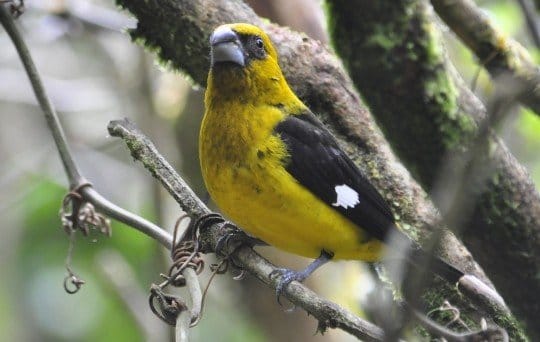 When I demanded of my friend what viands he preferred,
When I demanded of my friend what viands he preferred,
He quoth: “A large cold bottle, and a small hot bird!”
– Eugene Field, The Bottle and the Bird
One needn’t be restricted to the culinary arena to enjoy the pairing of wine and bird. I recommend that you start looking outside your kitchen for such delights. A number of select species are described as vinaceous, a word which means in turn either containing wine or wine-colored. When applied to avafauna, this terms refers, of course, to the latter.
Red wine possesses a profound purplish-red hue, in turns complex and pure. The Vinaceous Rosefinch and Vinaceous Fire Finch, also known as the Masked Fire Finch, possess plumage that would do any pinot noir proud. In fact, that brilliant bruise red is the same shade as that of North America’s House–Purple–Cassin’s suite of finches. I’m not the only one who finds “purple” an inadeqaute, if not entirely misleading depiction of the rich raspberry coloration of Carpodacus purpureus. Perhaps a name change is in order.
Despite the rarity of vinaceous in common bird names, the term still lacks consistency. While the aforementioned finches are intensely wine-colored, Vinaceous Doves and Parrots show more of a purplish blush.
As if that weren’t confusing enough, some birds have been labeled vinous rather than vinaceous. Vinous also means wine-colored, but also pertaining to or like wine or even fond of wine. Again, we can assume that birds have earned the title through color rather than taste. However, in plumage, vinous seems to show a bit browner than vinaceous. The Vinous-throated Parrot-bill of Asia is the best representative of this particular color, but there are also sparrowhawks and starlings with vinous breasts, kind of an earthy purple hue. There was once a Vinous-tinted Thrush, also known as the Lord Howe Island Thrush or Vinous-tinted Blackbird, but invasive species extirpated the poor thing.
All in all, the wine theme doesn’t seem to be applied in avian appellations as often as it could be. Often, maroon is used when merlot would be so much more poetic. The Claret-breasted Fruit-Dove, fronted by feathers of a clear, vivid red, appears well-named, as does the Wine-throated Hummingbird, since wine and throats have made a perfect pair throughout the ages. In general, though, these birds represent the brave few willing to mix wine and fowl in the wild. Well, them and the Rosé-breasted Grosbeak…




 New writers welcome – please contact us for details.
New writers welcome – please contact us for details.

















This was a new one for me!
Here I thought the other meaning of Hot Bird.